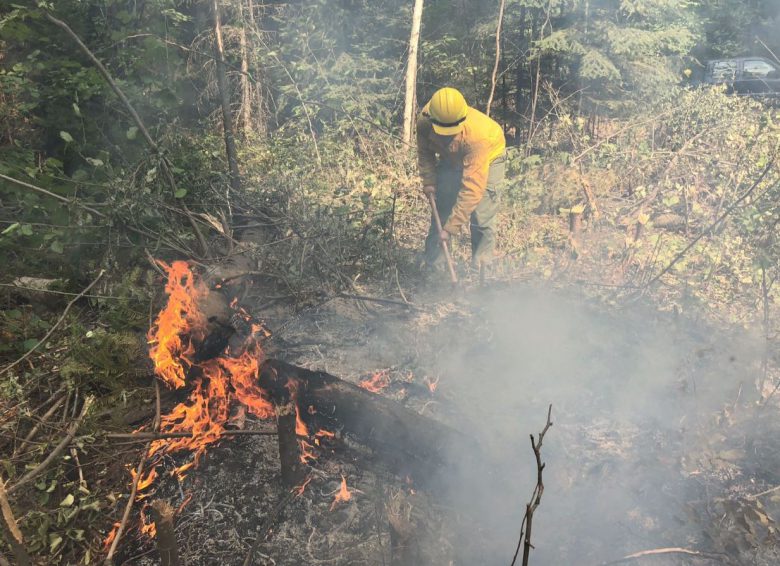A pilot of a fixed-wing wildfire suppression aircraft survived a crash in Washington state on Tuesday afternoon.

The FireBoss was one of five aircraft helping to fight the Horns Mountain wildfire southeast of Grand Forks in dense, U.S. forest.
“The aircraft experienced an unknown problem on the fire it was working near the US/ Canadian border,” a statement from aircraft owner Air Spray USA issued by the Washington State Department of Natural Resources Wildfire Agency said. “The pilot executed a forced landing on a logging road and was able to exit the aircraft.”
“We are very relieved to learn that the pilot was able to walk away from this incident,” incident commander Brian Goff said. “Firefighting aircraft work closely with ground firefighters to contain the fire. They are all part of the team. I admire the skill and bravery they exhibit on every fire.”
An investigation into the crash is ongoing.
The pilot is OK and receiving medical attention for possible injuries, according to Hilary Franz, Washington’s state commissioner of public lands.
The Horns Mountain fire remains a concern both in the U.S. and in Canada.
“This fire is currently 800 metres south of the Canada/U.S.A. border,” a BC Wildfire Service bulletin said at 2:42 p.m. on Tuesday.
Numerous properties between Christina Lake and Rossland remain on alert because of the Horns Mountain blaze and Sheep Creek fire to the east.
Information on the evacuation alert in the Santa Rosa and Big Sheep Creek area can be found at the Regional District of Kootenay Boundary website.
The Horns Mountain fire was mapped at 838 acres, or 339 hectares, on Tuesday morning and is burning through standing dead timber.
“These trees pose numerous hazards,” a report issued by the U.S. Forest Service said. “Embers from a burning snag can become airborne and ignite a spot fire up to one-third of a mile away, a falling snag can carry fire across the line, or can strike and injure a firefighter.”
There are 229 firefighters and support personnel assigned to the Horns Mountain blaze, as well as three helicopters, a fixed wing air attack plane and five FireBoss air tankers that can drop water on the flames.
“The FireBoss tankers are capable of scooping 820 gallons (3100 litres) of water from a lake or river,” the US Forest Service said. “Thirty-five-gallon tanks, in the planes’ float pontoons, hold retardant foam which is added to the water, making it a more effective fire suppressant.”
The Horns Mountain fire was sparked by lightning on Aug. 11 and is only five per cent contained.
A lack of rain throughout Washington state has become a concern because of the number of wildfires that continue to burn.
“The Washington Department of Natural Resources reports that 96 per cent of the state is experiencing drought-like conditions,” the U.S. Forest Service said. “The ERC, or energy release component, a measure of forest fuels’ potential to burn, is at historic highs.”
The Sheep Creek fire is 485 acres (196 hectares) and started burning on July 30. It’s unknown how the fire was sparked.
More than 250 members of the Washington National Guard have been brought in to help fight the wildfires in Washington state.
There are 22 wildfires burning in Washington and Oregon, according to the Northwest Interagency Coordination Center.
- ‘I did everything I believe that I could,’ officer tells inquest into deadly B.C. hostage taking
- B.C. unveils $300M to expand Metro Vancouver transit after federal budget snub
- Review hearing for child-killer Allan Schoenborn held in Coquitlam
- Caught on video: Woman says ‘hero’ helped save her from burning Burnaby building




Comments